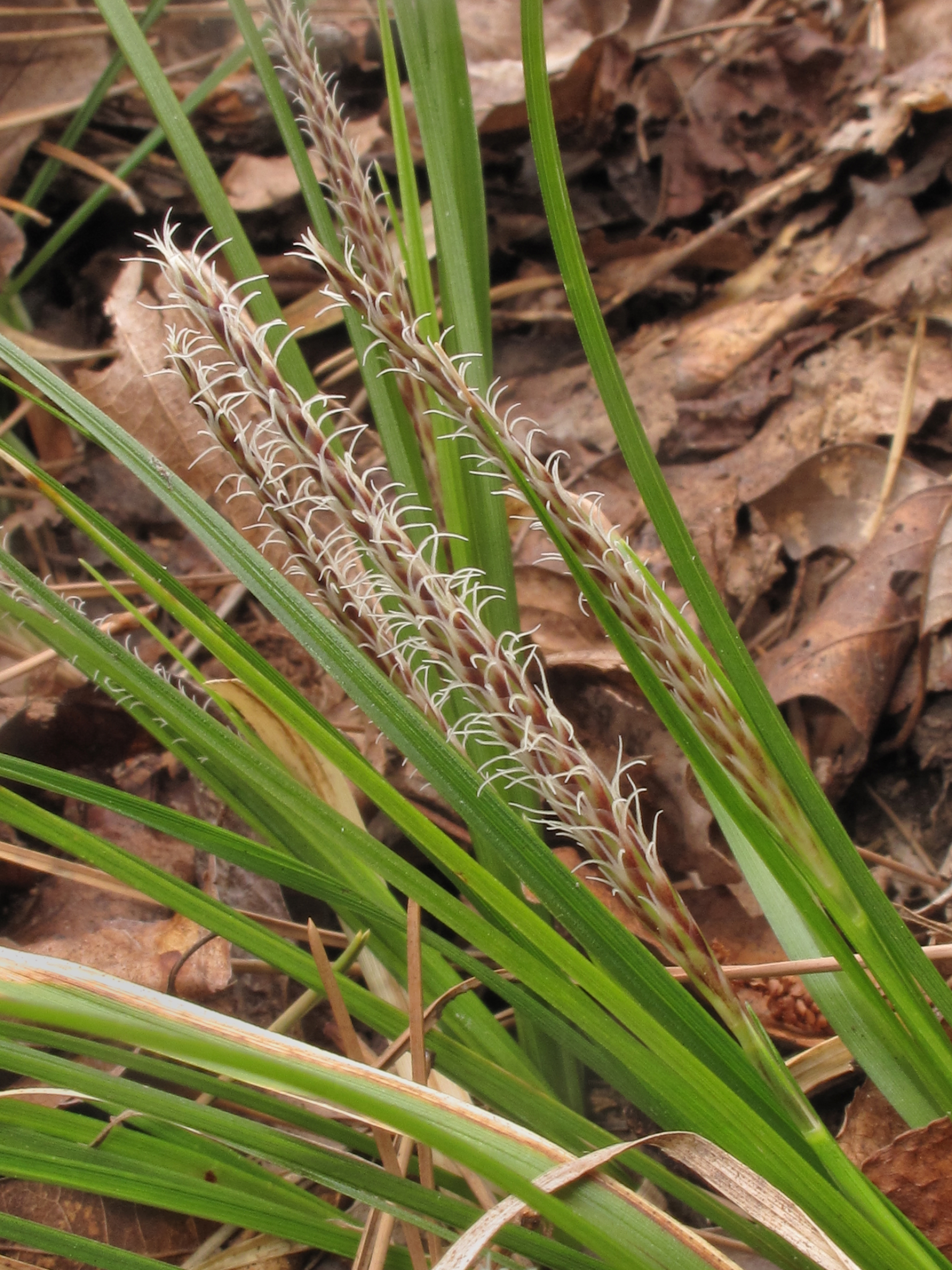Tarheel Sedge
(Carex pigra)

Description
Plants densely cespitose; rhizome internodes 1.2-2.8 mm thick. Culms yellow-brown at base, 10-50 cm. Leaves: sheaths glabrous; blades glaucous, widest blades 6.1-12.3 mm wide, smooth abaxially. Inflorescences 0.71-0.93 of culm height, rarely all spikes separate, peduncles of lateral spikes smooth, 0.4-11 cm; peduncles of terminal spikes 1.5-37(-62) mm, usually overlapping or shorter than distal lateral spike; proximal bract sheath loose, abaxially glabrous, sheath front slightly convex, elongated 0.2-2.2 mm beyond apex; ligules (3-)5.2-10.2 mm; distal bract slightly shorter than to much exceeding terminal spike. Spikes (3-)4-6, usually distal 2-3 overlapping; lateral spikes pistillate, longest ones with 11-25(-28) perigynia, 8-32 - 3.3-6.1(-6.8) mm, ratio of spike length (in mm) to flower number = (0.97-)1-1.3(-1.6); terminal spikes 6-32 - 1.8-3.3 mm. Pistillate scales 1.9-3.2(-4.5) - 1.3-2.2 mm, margins pale ferrugineous to whitish, entire, apex with awn 0.1-0.9(-1.9) mm. Staminate scales (3.9-)4.5-5.3 - 1.6-2 mm. Anthers 1.6-2.6 mm. Perigynia spirally imbricate, 42-56-veined, unwrinkled, narrowly ovoid, (3.7-)3.9-4.5(-4.7) - 1.5-2.2 mm, (1.9-)2.1-2.6(-2.8) times as long as wide, obtusely triangular in cross section, dull, base gradually tapered, apex gradually tapered; beak absent or straight, 0-0.2(-0.4) mm. Achenes obovoid, 2.6-3.1 - (1.3-)1.4-1.6 mm, 0.5-0.63 times as long as perigynia, loosely enveloped by perigynia; stipe straight, 0.1-0.3(-0.5) mm; beak bent (0-)30-90-, (0.1-)0.2-0.4(-0.5) mm. Fruiting spring. Mesic to wet-mesic deciduous forests or occasionally in moist prairies, usually in acidic to slightly alkaline clays and loams; 0-300 m; Ala., Fla., Ga., Miss., N.C., S.C., Tenn., Va. Carex pigra often associates with C. blanda and C. planispicata. The ranges of C. pigra, C. flaccosperma, and C. glaucodea overlap, although C. pigra is not commonly sympatric with those species. When growing with C. flaccosperma, C. pigra usually inhabits slightly drier sites, and when growing with C. glaucodea, C. pigra usually inhabits slightly moister sites. Carex pigra does not appear to form hybrids with either C. flaccosperma or C. glaucodea.
Taxonomic tree:







